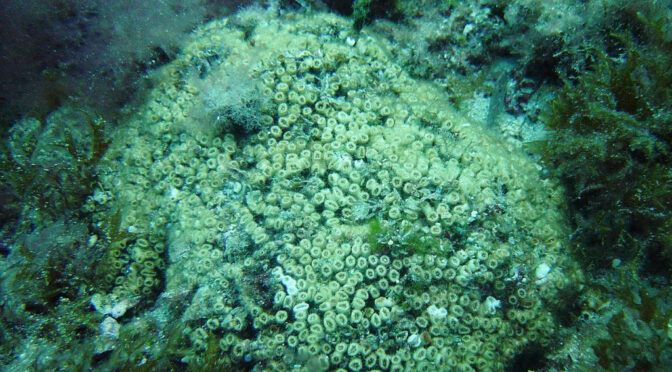Views: 311
Menorca has always been lucky in having a large natural port. It is six kilometres long, and is a result of the geological fault line between the north and south of the island.
It is evident that there are people who are insensitive to environmental issues, but these days the environment does not depend only on personal inclination. Now there are ample international regulations to ensure that the most threatened species are not lost. The law requires their conservation and sanctions are made against gratuitous attacks.
This is the case of the Mediterrean pillow coral, an endemic coral in our sea, which is protected by the International Agreement for the Protection of the Mediterranean. It is also a species included on the IUCN (International Union for the Conservation of Nature) Red List, classified as an endangered species and it has state level protection Listed as a Wild Species under the Regime of Special Protection.
This natural treasure that we are lucky enough to have in the Port of Mahon, has been in the public eye because construction works are required in areas where there are colonies of the coral. Here is a brief explanation.
The Cala Corb walkway
One of the points is in Cala Corb, where a work was demanded by the Es Castell Ayuntamiento to connect to the walkway that starts in Calesfonts. The report of the construction project was opened to public scrutiny, and a tender was made for a wooden walkway in the Cala Corb area.
To the surprise of everyone, once the works had been awarded and started, the definition of part of Cala Corb was altered while work was in progress, and huge amounts of waste materials were thrown into it. The same day that GOB asked to see the file for the licence, the works stopped.
No one had authorised this alteration. As a consequence of the dumping of waste materials, several colonies of the protected coral was gravely affected. The opinion of the environmental authority of the Central Government has been expected since then.
The argument given by the technicians who were involved is that the rock does not demonstrate sufficient strength to support the walkway as initially planned. But, this directly contradicts the project for the works which included a geological study, incorporated in Annex 1, that confirmed the strength of the rock made by different examinations carried out along the area where the cantilevered walkway was to run.
Studies signed off by qualified technicians, have not been contradicted by any written documentation from the Port Authority, only by word of mouth.
This means that the case of Cala Corb includes substantial, unauthorised modification of the licenced works, with no consideration for the study submitted on the environmental effects with a consequent serious impact on the protected species all because of a version in complete contradiction to that on file.
Fixing the planned walkway is technically easy to resolve because there are sufficient methodologies on the market to guarantee its possibility. This is especially so when a technical study exists that details the solidity of each part of the rock that will support it.
In GOB’s opinion, it would be sensible to recoup the original project, remove the dumped waste and process a restitution to the environmental damage. This seems to be the clearest way to finish the project and respond to the municipal request for making a walkway to connect with the pedestrian path.
The Illa del Rei Dock
A few months after the Cala Corb case, interest was shown in tendering for an extension to the dock on the south side of the Illa del Rei, also with a gravity load system so that the dimensions would be little more than double the current size.
To avoid new irreversible effects, GOB asked the Port Authority that a survey of environmental values be made before carrying out the work, bearing in mind that the entire outer perimeter of the Illa del Rei is an ANEI (A Natural Area of Special Interest) High Level of Protection.
This was done and its was found that the area also had the same coral species present as in Cala Corb, so the work was held up waiting to know if the environmental Ministry would authorise moving the coral colonies to another
place.
The project, when opened to public scrutiny, did not justify a need for this extension. It should be remembered that the dock had already been enlarged in 2008 by 30% and an auxiliary work dock in 2010.
If it is shown that the activity is in the public interest then consideration should be given that there may be other systems, used in other ports of Menorca, that can be used for pontoons, rather than the gravity load system with the inevitable dramatic change to the entire seabed.
It must be borne in mind that the Illa del Rei is just three kilometres from the mouth of the Port. The enlargement of the dock proposed is to be made to the west, that is towards the inner part of the Port, sheltered by the existing gravity load dock. We understand that using infrastructure with less impact would serve to unblock the current holdup of the works.
But, if it is insisted in making a work dock, then there will have to be a further delay to that of the last two years, waiting for the Ministry authorization.
The Ports are areas that coexist closely with the individual problems of the towns. The Port of Mahon has seen a lot of waterside loss and changes to the sidewalks, especially in the last 50 years. Learning to use it without causing endless damage to the environment is a moral necessity and a legal obligation.

